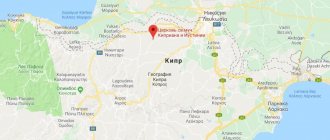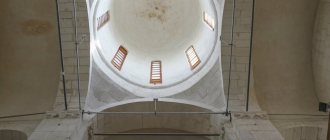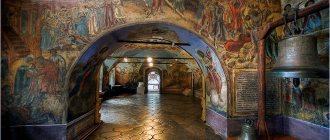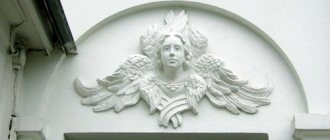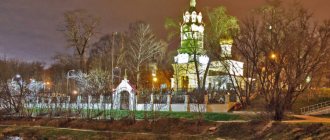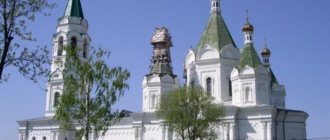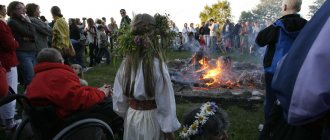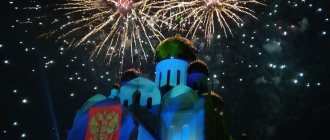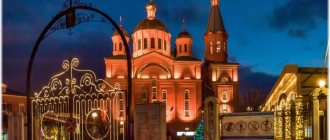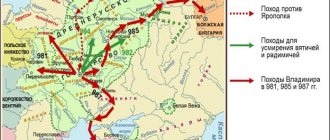Mir
Russia Vladimir region Vladimir Nikitskaya Church (Vladimir) Map loading in progress...
{"format":"leaflet","minzoom":false,"maxzoom":false,"limit":50,"offset":0,"link":"all","sort":[""], "order":[],"headers":"show","mainlabel":"","intro":"","outro":"","searchlabel":"\u2026 \u0441\u043b\u0435\ u0434\u0443\u044e\u0449\u0438\u0435 \u0440\u0435\u0437\u0443\u043b\u044c\u0442\u0430\u0442\u044b","default":"","import-annotation":false,"width ":"auto","height":"350px","centre":{"text":"","title":"""link":"""lat":56.130721399999998766361386515200138092041015625,"lon": 40.39768699999999768124325782991945743560791015625,"icon":""},"title":"","label":"","icon":"","lines":[],"polygons":[],"circles":[ ],"rectangles":[],"copycoords":false,"static":false,"zoom":8,"defzoom":14,"layers":["OpenStreetMap"],"image layers":[] ,"overlays":[],"resizable":false,"fullscreen":true,"scrollwheelzoom":true,"cluster":false,"clustermaxzoom":9,"clusterzoomonclick":true,"clustermaxradius":80, "clusterspiderfy":true,"geojson":"","clicktarget":"","showtitle":true,"hidenamespace":false,"template":"","userparam":"","activeicon": "","pagelabel":false,"ajaxcoordproperty":"","ajaxquery":"","locations":[{"text":"\u003Cb\u003E\u003Ca href=\"/palomnik/%D0% 9D%D0%B8%D0%BA%D0%B8%D1%82%D1%81%D0%BA%D0%B0%D1%8F_%D1%86%D0%B5%D1%80%D0%BA% D0%BE%D0%B2%D1%8C_(%D0%92%D0%BB%D0%B0%D0%B4%D0%B8%D0%BC%D0%B8%D1%80)\» title=\ "" \u0438\u043c\u0438\u0440 )\u003E\u041d\u0438\u043a\u0438\u0442\u0441\u043a\u0430\u044f \u0446\u0435\u0440\u043a\u043e\u0432\u044c (\u0412\u043b\u04 30\u0434\u0438\u043c \u0438\u0440)\u003C/a\u003E\u003C/b\u003E\u003Chr /\u003E\u003Ca href=\"/palomnik/%D0%A1%D0%B2%D0%BE%D0%B9%D1% 81%D1%82%D0%B2%D0%BE:%D0%90%D0%BD%D0%BD%D0%BE%D1%82%D0%B0%D1%86%D0%B8%D1%8F \" title=\"\u0421\u0432\u043e\u0439\u0441\u0442\u0432\u043e:\u0410\u043d\u043d\u043e\u0442\u0430\u0446\u0438\u044f\"\u003E\u0410 \u043d\ u043d\u043e\u0442\u0430\u0446\u0438\u044f\u003C/a\u003E: »'\u041d\u0438\u043a\u0438\u0301\u0442\u0441\u043a\u0430\u044f \u04 46\u0435\u0440\u043a \u043e\u0432\u044c \u0433\u043e\u0440\u043e\u0434\u0430 \u0412\u043b\u0430\u0434\u0438\u043c\u0438\u0440\u0430"' \u2014 \u0 445\u0440\u0430\u043c,\ u043f\u043e\u0441\u0442\u0440\u043e\u0435\u043d\u043d\u044b\u0439 \u0432 1760-\u0445 \u0433\u043e\u0434\u0430\u0445 \u0432\u 043b\u0430\u0434\u0438\u043c\ u0438\u0440\u0441\u043a\u0438\u043c \u043a\u0443\u043f\u0446\u043e\u043c \u0421\u0435\u043c\u0451\u043d\u043e\u043c \u041b\u 0430\u0437\u0430\u0440\u0435\ u0432\u044b\u043c. \u0425\u0440\u0430\u043c \u043f\u043e\u0441\u043b\u0443\u0436\u0438\u043b \u043e\u0431\u0440\u0430\u0437\u0446\u043e\u043c \u0434\u043b\u044f \u0422\u0440 , \u0432\u043e\u0437\u0432 \u0435\u0434\u0435\u043d\u043d\u043e\u0433\u043e \u0432 \u043f\u043e\u0434\u043c\u043e\u0441\u043a\u043e\u0432\u043d\u043e\ u043c\u0433\u043e\u0440\u043e \u0434\u0435 \u0414\u043c\u0438\u0442\u0440\u043e\u0432\u0435. XVIII \u043 2\u0435\u043a\u0430.", "title":"\u041d\u0438\u043a\u0438\u0442\u0441\u043a\u0430\u044f \u0446\u0435\u0440\u043a\u043e\u0432\u044c (\u0412\u043b\u0430\u 0434\u0438\u043c \u0438\u0440)","link":"","lat":56.130721399999998766361386515200138092041015625,"lon":40.3976869999999976812432578299194574356079101 5625,"icon":""}],,"imageLayers":[]}
56.130728; 40.397795
Russia, Vladimir, Knyagininskaya street, 8
Vladimir, Vladimir region600000
Russia
Phones:
+7 (910) 183-82-02; +7 (4922) 55-24-02
Email:
Nikitskaya Church of the city of Vladimir
- a temple built in the 1760s by the Vladimir merchant Semyon Lazarev. The temple served as a model for the Trinity-Tikhvin Church, erected in the town of Dmitrov near Moscow. An architectural monument of the 18th century.
In 1938, the temple was closed for worship, and the Vladimir Experimental Scientific and Restoration Production Workshop (“Vladimir-Restoration”) was located within its walls.
In August 2015, it was returned to the Vladimir Diocese and it became operational again.
History[edit]
The history of the temple dates back to ancient times. The first mention of the church is associated with the name of the abbot of the Cosmo-Damianovsky monastery Arseny, who, disregarding the danger, on the third day after the murder of Prince Andrei Bogolyubsky, was the first to appear in the princely chambers and performed the funeral service for the murdered prince. Apparently, in memory of the monastery, which was previously located on the site of the Nikitsky Church, the lower altar of the temple was consecrated in honor of the holy great martyrs and unmercenaries Cosmas and Damian. Over time, monastic life in the monastery became impoverished, and already in the 17th century there were no mentions of the monastery.
In 1762, the Vladimir merchant Semyon Andreevich Lazarev began construction of a three-story temple with three altars. In 1765, the head of the Vladimir diocese, Bishop Pavel, consecrated a new church, which from that time received the name Nikitskaya.
In 1849, side chapels were added to the temple. These extensions made both the upper and lower parts of the temple inconvenient, since neither one nor the other received enough light. In 1869, with the active participation of a parishioner of the temple, architect N.A. Artleben, windows were broken in the lower part of the extensions, the aisles were divided into two floors, and the third floor was combined with the second.
On the first floor, chapels were built: on the left - in honor of the Holy Great Martyr Nikita (moved from the third floor), and on the right - in honor of the holy apostles Peter and Paul. In 1887, at the expense of parishioner P. A. Kozlov, a chapel was built in honor of the Nativity of the Blessed Virgin Mary (on the second floor).
After the 1917 revolution, attempts were made to close the temple several times. In 1936–1937, city authorities carried out a number of arrests of clergy accused of anti-Soviet activities. In 1938 the church was closed. According to some sources, this was the last Orthodox church in the city in which divine services were held.
Since the 1970s, the temple building was given over to the Vladimir Special Scientific and Restoration Workshop for design work. The interiors have been significantly rebuilt. The summer church was made into two floors. An attic was built on top for storing things of historical value. The designers are located on the spacious third floor. At the end of the 1980s, an observation deck was built on the bell tower.
In 2015, the Nikita Church was returned to the Russian Orthodox Church. Nowadays, Divine services are held in the church, and a Sunday school operates.
Church of Nikita the Martyr on Basmannaya
The Church of Nikita the Martyr in Basmannaya Sloboda is one of the most striking monuments of the mid-18th century in Moscow. Rumor stubbornly connects her with the name of Nikita Antufeev, known in Russia as Demidov. After all, on the other side of the alley there is a beautiful palace that belonged to Nikita’s grandson Ivan Ivanovich Demidov. Since 1819, the Demidov Palace has been occupied by the Konstantinovsky Land Survey Institute. In Soviet times, it was renamed the Moscow Institute of Geodesy, Aerial Photography and Cartography Engineers (Miigaik).
Table of contents
Church of Nikita the Martyr. Story
In fact, the local temple appeared long before the rise of the Demidovs. The original wooden church was erected under Vasily III on the site of farewell to the miraculous Vladimir Icon of the Mother of God. The image was brought to Moscow for renovation, as it had become dilapidated. At the end of the 17th century, the temple was rebuilt in stone. It is possible that this temple survived until 1745. Then the parishioners filed a petition for
dismantling the church with two stone chapels and building a larger church in the same place.
There is a legend according to which local residents, among whom were many noblemen and wealthy merchants, considered the old church “inappropriate.” They were offended that in the neighboring Kapitanskaya Sloboda on Novaya Basmannaya Street a newfangled Peter and Paul Church was erected according to the drawings of Peter I himself.
Church of Peter and Paul on Novaya Basmannaya
The new temple was built in five years and consecrated in 1751. The main altar retained the consecration of the former church in the name of the Vladimir Icon of the Mother of God, and the side chapels were consecrated in the name of Nikita the Martyr and the Nativity of John the Baptist. The apse of the ancient church was preserved during the reconstruction. It is visible in the south-eastern part of the refectory.
Architect of the Church of St. Nikita the Martyr
The Church of St. Nikita the Martyr is associated with the name of the brilliant architect of the mid-18th century. His name is Prince Dmitry Vladimirovich Ukhtomsky. Art critics of the last century differed in their assessments of the artistic merits of the temple. Igor Grabar wrote that this church
judging by the… roughness of the forms and details, it seems to belong to the era of collapse.
Alexey Mikhailov, the author of a monograph on the work of Dmitry Ukhtomsky, believed that
both the general composition of the temple and its details are drawn with a masterful, confident hand and there is no simplicity or timidity in them
Dmitry Ukhtomsky built the temple as a “ship”, combining three main parts: the bell tower, the refectory and the church itself. The bell tower serves as the dominant feature of the quarter and closes the perspective of the road leading from the city center. The lower tier of the bell tower turns into a lighter upper tier and ends with an elegant lantern with an elongated dome.
The massive octagon of the temple is decorated with double pilasters. The elegant platbands of the huge windows are nice. The church is completed by a closed vault with oval lucarnes and a small illuminated dome.
Church interiors
During Soviet times, the Church of St. Nikita the Martyr was closed, and in 1933 they decided to demolish it to build a “house of councils” in the Baumansky district. Fortunately, they did not have time to destroy it. But the interiors were looted and rebuilt. The church was used as a training base for general education, a warehouse and a dormitory. The interior was looted. It was all the more surprising to see the preserved interior details. The beautiful baroque iconostasis is especially impressive.
Iconostasis of the Church of St. Nikita the Martyr on Basmannaya
Its delicate pink background harmonizes with gilded columns, cornices and volutes. The Royal Doors with the traditional scene of the Annunciation and the four evangelists are interesting.
The northern and southern walls are decorated with paired columns made of artificial marble with bronze capitals.
The painting of the church gives the impression of being authentic. It is possible that it was renovated, but it seems to me that a competent restoration was carried out in the interiors.
Dome of the Church of Nikita the Martyr on Basmannaya
It is also worth paying attention to the church choirs. They are decorated with gilded stucco molding and paintings depicting the Intercession of the Virgin Mary.
In general, the Church of St. Nikita the Martyr on Staraya Basmannaya is truly one of the pearls of old Moscow. Its special value is that it is a monument of the Elizabethan era. After all, most of the buildings of that time were destroyed in the fire of 1812.
How to get to the Church of the Great Martyr Nikita in Moscow
Postal address of the Church of Nikita the Great Martyr: Staraya Basmannaya Street, 16/1. The nearest metro station is Baumanskaya. At Baumanskaya station there is one exit to the city. From the metro go straight to Spartakovskaya Street. Next, turn left and follow Spartakovskaya to the west. Spartakovskaya turns into Staraya Basmannaya Street. You will notice the church from afar; the bell tower of the temple can be seen at a considerable distance.
Stories about attractions are the main theme of our site. We pay special attention to churches, their history, and interiors. We bring to your attention essays about the Ordinary Church of Elijah the Prophet and the Church of the Nine Martyrs of Kiz.
Description[edit]
The interior decoration of the
Nikitskaya Church is a unique architectural monument for Vladimir, built in the provincial Baroque style. The composition of the church is based on the traditional refectory type of church for Russia at that time, but outwardly the church more closely resembles a civil building.
The building with a white and green facade is divided into three tiers by large windows framed by baroque frames (each window has its own pattern). The corners of the building are decorated with pilasters with order capitals.
According to local historians, before the revolution, the Nikitsky Church could be seen anywhere in the city.
A similar temple is located in Dmitrov. In 1794-1801, in the image of the Nikitsky Church, the Trinity-Tikhvin Church was built there, which is still in operation today.
Already during construction, the main attraction of the temple was the luxurious iconostasis with carved royal doors, similar in shape to the iconostasis of the Assumption Cathedral of Vladimir.
Many windows created a special atmosphere inside during services. They were placed by the builders in such a way that the temple would be very light and festive during sunny times.
Church history
The church has a rich and interesting history. It has survived for two centuries, and these walls have a lot to tell.
Predecessor of the temple
Long before the 18th century, on the site of the temple there was a completely different building - the Cosmo-Damian Monastery, which was built in honor of the two great martyrs and unmercenaries Cosmas and Damian.
The first mentions of him can be found by studying historical information about the life and death of Prince Andrei Bogolyubsky. The abbot of this monastery, Arseny, decided to perform the funeral service for Prince Andrei Bogolyubsky on the third day after his murder, risking his own life.
It is believed that the monastery had wooden buildings and was quite small. It is not known for certain when and why it ceased to exist.
Construction and foundation
The church was built by a local merchant Semyon Lazarev, the construction was carried out at his own expense. The three-story building began to be erected in 1762, and within a few years the building of the Nikitsky Church arose on this site.
Nikita Church was named in honor of Nikita the Stylite, who took monastic vows, and, renouncing all worldly goods, retired to a stone pillar, wearing a stone cap and heavy iron chains. He was killed by robbers, mistaking the chains shining in the sun for silver.
It was consecrated by the confessor of Catherine the Great herself, Bishop Paul.
However, the construction of the temple took quite a long time; for a whole century, almost every elder made his own changes to its appearance. First, two chapels with iconostasis were completed on both sides of the main building, but this was not a very good solution, because the windows were located so high that the rooms lacked either light or heat. In 1867, this was corrected by cutting windows on the lower floors of the extensions, and also connecting the upper floors of the aisles with arches. And the temple became what it should have been - warm and bright.
Historical fate
With the coming to power of the Bolsheviks, a large atheist campaign began. Priests were arrested, and places of worship were closed and either abandoned completely or transferred to economic needs. Neither one nor the other was useful for temple buildings.
The same fate befell the Nikitsky Church. They tried to close it since 1917, but the authorities still failed. The last operating church in the city, where services were held, was closed in 1938, which was preceded by a series of arrests and executions of clergy.
Reconstruction and revival of the temple
In 1970, the building was given over to restoration workshops. As a result of such innovations, it again underwent significant changes: the summer church was made into two floors, an attic appeared on top, where all the things that, according to Soviet experts, were of historical value were removed. And in 1980, the bell tower was glazed and became an observation deck.
Current situation
Until 2015, history did not change its course. On the third floor, designers worked, diligently drawing up drawings, historical values were stored in the attic, and from the observation deck you could admire the view, but you could not hear the bell ringing. And no services were held in the temple.
But in 2015, the authorities decided to return the building to the ownership of the Russian Orthodox Church, and the bells began to sound again. Now services are held here again, and people come to pray for themselves and their loved ones. A Sunday school also operates within these same walls.
Architecture and decoration of the building
Nikitskaya Church has become a unique architectural monument for the Vladimir region, built in the provincial Baroque style. Now the temple is hidden inside the city, but earlier, according to sources, the beauty of the Nikitsky Temple could be seen from anywhere.
Appearance
Externally, the building is more similar in style to the rich houses of that time than to the usual cathedrals, made according to the canons of temple architecture.
The green and white facade of the building is very elegant and has a large number of windows, each of which is decorated with Baroque-style platbands. Each window has its own unique pattern. The corners of the building are decorated with pilasters with order capitals. At the same time, everything together looks very harmonious and does not overload the facade.
A slender dome, made in the same style, crowns the decoration of the temple. A slightly more massive tetrahedral bell tower rises nearby, giving part of the structure the appearance of a castle tower.
Interior design
Many windows give an unusual look not only from the outside, but also from the inside. Thanks to the large amount of light in the rooms, there is always an atmosphere of warmth and closeness to God.
On the walls there are many paintings created at the end of the 18th century; the icons are framed in luxurious gilded frames with a lush floral pattern. All the interior decoration, as well as the exterior, is designed in the Baroque style. Thanks to the large number of windows, the light falls from many different angles, intricately refracting on the gloss of decorations and passing through a light mist of incense, which only emphasizes the special spirituality and beauty of this place. And the most important decoration of the interior is the luxurious iconostasis.
Iconostasis
The iconostasis first appeared in the church back in 1850 during its first reconstruction by the new church warden Pyotr Vasilyevich Kozlov. Then it was further decorated and gilded under the new headman in 1899.
The luxurious iconostasis is made in the style of Catherine the Second, with carved royal doors on which is placed an image of the Annunciation of the Blessed Virgin Mary, and a wooden canopy is arranged above the throne. There are five thrones in total, including the throne in honor of the holy martyr Nikita, whose name the temple bears. In shape it resembles the iconostasis of the Assumption Cathedral of Vladimir. And this is no coincidence, because the author of the Assumption iconostasis was a parishioner of the Nikitsky Church - archaeologist, architect Nikolai Andreevich Artleben.
Architectural features of the bell tower
The bell tower is made in the same style as the church. In 1899, in preparation for changes to the iconostasis and other repairs, a reconstruction of the bell tower was also planned, but the plans were not destined to come true, so we can see it in the same form in which we observed it in those days.
The structure is quite tall and exceeds the height of the head of the church, which is why at the very beginning it may seem somewhat cumbersome and oppressive. However, afterwards you notice that the tower tends upward, as if indicating the aspirations of prayers announced by the ringing of bells. The bell tower, like the head of the church, bears four-pointed slotted crosses. On the iron cross of the bell tower there is an angel with a trumpet to indicate the wind.
Vladimir Church in Nikitsky
The Vladimir Church is located in the village of Nikitskoye, Ramensky district, where in the 16th century there stood the ancient temple of the Great Martyr Nikita. The first temple was consecrated in honor of the heavenly patron of the village owner Nikita Romanovich Zakharyin-Yuryev - brother-in-law of Ivan the Terrible, father of Patriarch Filaret and grandfather of Tsar Mikhail Fedorovich. Lieutenant General Nikolai Ivanovich Roslavlev, a participant in the conspiracy that brought Catherine II to power, ended his days in Nikitskoye.
The village of Nikitskoye and its namesake suburban town of Nikitsk, which existed from 1781 to 1802 on the site of the present Kolychevo Domodedovo urban district, were named in honor of the Great Martyr Nikita - the patron saint of the leaders of two related boyar families descended from the legendary Andrei Ivanovich Kobyla. Outstanding church figures of the past came from both families: St. Philip Kolychev and Patriarch Filaret Romanov.
From Andrei Kobyla and his five sons came seventeen houses of Russian nobles. From the fifth son, Fyodor Andreevich Koshka, the Zakharyin-Yuryev family descended. Nikita Romanovich Zakharyin-Yuryev, who gave the name to the village of Nikitskoye, took monastic vows with the name Nifont a year before his death and was buried in the Romanov family tomb in the Moscow Novospassky Monastery. His son Fyodor Nikitich Romanov also became a monk, and after the accession of his son Mikhail - Moscow Patriarch Filaret.
The surviving brick church building with white stone details in Nikitsky was built in the 18th century. In the late 1830s - 1840s, under the ownership of the village, the Roslavlevs, the chapels in honor of Sergius of Radonezh and the Great Martyr Nikita were renovated, and then a bell tower with a high spire was built, which was later connected by a porch to the temple.
Lieutenant General Nikolai Ivanovich Roslavlev is considered to be the organizer of the estate in Nikitskoye, of which ruins remain near the Vladimir Church. YES. Korsakov, in his article “Supporters of the Accession of Catherine II,” named him among “the people of June 28, 1762.” On this day, when the church celebrated the memory of the unmercenaries Cyrus and John, a group of conspirators overthrew Emperor Peter III, and his wife Catherine II was proclaimed queen. Brothers Nikolai and Alexander Roslavlev were generously awarded by the Empress for their active participation in the conspiracy. In particular, Alexander Roslavlev received as a gift the village of Lovetskie Borki of the present Lukhovitsky district of the Moscow region, where he built a church in honor of the unmercenary saints Cyrus and John.
After the accession of Catherine II to the Russian throne, N.I. Roslavlev was one of the people closest to the new empress. In September 1762, Nikolai Ivanovich accompanied the queen to Moscow for the coronation, and during a gala dinner in the Faceted Chamber he stood near Catherine’s throne next to Count I.S. Gendrikov and Alexey Grigorievich Orlov.
In 1765, in honor of the third anniversary of her accession to the throne, Catherine presented the accomplices of the coup that brought her to power with magnificent sets, but the Roslavlev brothers were not on the “service list”. Like Prince M.P. Gagarin and Baron A.I. Osterman - owners of the neighboring village of Stepanovskoye, N.I. Roslavlev lost the royal trust and lost his high position. In 1763, he was exiled with his family to the fortress of St. Elizabeth, which was located on the territory of Ukraine.
The reason for N.I.’s disgrace Roslavlev became involved in the case of the alleged second marriage of Catherine II, the project of which was discussed just a year after the queen’s accession to the throne. The idea of a new marriage was promoted by Alexey Grigoryevich Orlov, wanting to make his brother Grigory the queen’s husband. A plausible pretext for this was the poor health of the only heir to the throne, Pavel Petrovich.
Opponents of the rise of the Orlovs rebelled against this “marriage,” including Major General N.I. Roslavlev. The instigator of the conspiracy, chamber cadet Fyodor Khitrovo, gathered his accomplices and spoke out in favor of killing the Orlovs. In parallel with this, in Moscow through N.I. Roslavlev, a rumor was spread about Catherine’s receipt, in which she allegedly wrote in 1762 about the condition of being the ruler of Russia only until her son Paul came of age. Few people, including Nikolai Roslavlev, knew about this document, unpleasant for the empress, probably destroyed after her accession.
The case against the conspirators of the chamber cadets Khitrovo, Roslavlev and some others ended without trial, but administrative measures were taken: Nikolai Ivanovich Roslavlev was imprisoned for two years in the Elizabethan Fortress and removed from business. In 1763, Roslavlev wrote from captivity to his friend Elagin: “For the sake of philanthropy, I ask only that I be taken out of here, even if I die closer to Moscow, but I am very sick, my throat is bleeding and I can’t get out of bed, there is no one to treat me, the worst doctor, my wife.” The poor woman is also sick and, moreover, has a paunch.” Roslavlev was allowed to move to an estate near Moscow, and Roslavlev spent the last twenty years of his life away from court affairs in Nikitsky.
In 1937, the Vladimir Church in Nikitsky was closed, and priest Nikolai Kovalsky, appointed rector shortly before, was arrested and sentenced to ten years in the camps. The reason for the arrest was the priest’s initiative to repair the dilapidated roof of the temple in 1937. After closing, a store and warehouse were set up in the church. In 1979, a partial restoration was carried out, and in the early 1990s the building was returned to believers. However, even today the interior of the temple and the bell tower require extensive repairs.
How are the services held?
In 2015, services began in the church. Every month the list of services dedicated to the holy holidays available in that month is updated. The schedule changes regularly; you can find it on the official website of the temple.
There is also a schedule for those services that are held regularly:
- conversation preceding the sacrament of baptism (18:00, Friday);
- funeral service (9:30, every Saturday);
- Baptism of infants and adults (10:00, every Saturday);
- Water Blessing Prayer (9:30, every Sunday).
